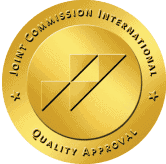Naltrexone has shown promise in helping with alcohol and opioid dependence, and in some cases chronic conditions, but its effectiveness often relies just as much on what you avoid while taking it as on the medication itself.
Mixing naltrexone with certain substances can trigger severe withdrawal symptoms, render your treatment completely ineffective, or create dangerous health complications. Opioids, alcohol, and specific medications can interfere with how naltrexone works in your body, potentially sabotaging months of progress.
Understanding these critical restrictions isn’t just about following doctors’ orders – it’s about protecting your investment in healing. Whether you’re considering LDN therapy or already taking it, knowing what to avoid can make the difference between treatment success and frustrating setbacks.
Substances to Avoid When Taking Low Dose Naltrexone
Understanding what to avoid when taking low dose naltrexone ensures your treatment remains effective and prevents potentially dangerous complications. Several categories of substances can interfere with LDN’s therapeutic benefits or create serious health risks.
Opioid Medications and Recreational Opioids
It’s essential to avoid all opioid medications while taking low dose naltrexone (LDN). Even in small amounts, naltrexone binds to opioid receptors, which blocks the effects of opioids and can trigger sudden withdrawal symptoms in people who are physically dependent.
Prescription opioids such as hydrocodone, oxycodone, morphine, codeine, tramadol, and fentanyl should not be taken with LDN. Because naltrexone occupies the same receptor sites, these medications will not provide effective pain relief. Trying to increase opioid doses to “push past” the blockade is extremely dangerous and can lead to overdose once the naltrexone effect wears off.
Recreational opioid use while on LDN is even more dangerous. Since the medication reduces or eliminates the desired effects, some people may take far larger amounts in an attempt to feel high, creating a significantly higher risk of life-threatening overdose when the naltrexone blockade lifts.
If you ever require emergency medical care where opioid pain management might be necessary, it’s critical to inform healthcare providers that you are taking LDN. This allows them to use alternative pain management strategies and keep you safe during medical procedures.
Alcohol Consumption
Alcohol use while taking low dose naltrexone (LDN) should be carefully considered. Naltrexone works by blocking opioid receptors in the brain, which can also reduce the rewarding or reinforcing effects of alcohol. However, it does not stop alcohol from impairing coordination, reflexes, or judgment — intoxication can still occur.
For individuals using LDN off-label for chronic pain, autoimmune conditions, or other health concerns, drinking alcohol may interfere with treatment goals. Alcohol can disrupt normal endorphin activity and put added stress on the immune system, which may reduce the potential benefits of LDN therapy.
In people with a history of alcohol dependence, naltrexone (even at standard or low doses) is sometimes prescribed to reduce cravings and drinking. In those cases, alcohol is not absolutely contraindicated, but continued drinking undermines recovery and health outcomes.
Heavy alcohol use while on LDN carries the greatest risk, as it not only conflicts with treatment goals but also increases the burden on the liver — especially important since naltrexone itself is metabolized through the liver. Because of this, regular monitoring of liver function may be recommended.
Even moderate alcohol intake may reduce how effective LDN is for certain conditions. The safest approach is to discuss alcohol use openly with your healthcare provider, who can help determine what level of drinking — if any — is safe for your specific situation.
Certain Over-the-Counter Medications
Over-the-counter medications containing opioid compounds create significant low dose naltrexone interactions that you must avoid. Loperamide (Imodium), a synthetic opioid used for diarrhea treatment, can interfere with LDN therapy and should not be taken during treatment.
Dextromethorphan, found in many cough suppressants, may interact negatively with low dose naltrexone and reduce its therapeutic effectiveness. Common cough medications containing this ingredient include popular brands available at most pharmacies.
Certain prescription cough suppressants and antidiarrheal medications may contain codeine, hydrocodone, or other opioids. Reading medication labels carefully and consulting your healthcare provider before taking any new over-the-counter drugs prevents accidental interactions.
Pain relief medications containing aspirin, acetaminophen, or NSAIDs are generally safe to use with LDN, but you should verify with your healthcare provider that these medications align with your overall treatment plan and don’t interfere with other prescribed therapies.
Drug Interactions and Medical Considerations

Drug interactions and pre-existing medical conditions significantly impact low dose naltrexone safety and effectiveness. Understanding these medical considerations helps you avoid complications and ensures best treatment outcomes.
Prescription Medication Interactions
Prescription medications can interfere with low dose naltrexone efficacy and create dangerous side effects when combined improperly. Narcotic painkillers represent the most critical category to avoid, as naltrexone blocks opioid receptors and can trigger severe withdrawal symptoms even with prescribed medications like tramadol, codeine, or fentanyl patches.
Antidiarrheal medications containing loperamide pose significant risks when combined with LDN, as they contain opioid compounds that interact negatively with naltrexone’s receptor-blocking properties. Certain cough suppressants, particularly those with dextromethorphan or codeine, can also compromise treatment effectiveness and trigger adverse reactions.
Medications metabolized by the same liver enzymes as naltrexone may interfere with proper drug processing and increase the risk of negative side effects. Immunosuppressing drugs used for autoimmune conditions require careful monitoring when combined with LDN, as they can alter the medication’s intended immune-modulating effects.
Always inform your healthcare provider about every prescription medication you’re taking, including recent changes or temporary medications, to prevent dangerous low dose naltrexone drug interactions that could compromise your treatment success.
Existing Liver and Kidney Conditions
Liver disease requires intensive monitoring during low dose naltrexone therapy, as naltrexone can elevate liver enzymes and potentially worsen existing liver conditions. Patients with hepatitis, cirrhosis, or other liver disorders face increased risks of liver complications and may require modified dosing schedules or alternative treatments.
Regular liver function tests become essential for individuals with pre-existing liver conditions, allowing healthcare providers to detect adverse reactions quickly and adjust naltrexone dosages accordingly. Full-dose naltrexone poses greater liver risks than low-dose formulations, but even reduced doses warrant careful hepatic monitoring.
Kidney disease significantly affects how your body processes and eliminates naltrexone, potentially leading to medication accumulation and increased side effects. Individuals with chronic kidney disease, reduced renal function, or dialysis dependence require specialized dosing adjustments and frequent monitoring to ensure safe LDN therapy.
Dosage modifications often become necessary for patients with compromised kidney function, as standard doses may prove too intense for individuals with impaired drug clearance capabilities. Consistent medical checkups help identify emerging kidney-related problems and allow timely therapy plan modifications.
Autoimmune Disorder Considerations
Autoimmune conditions create unique challenges when combined with low-dose naltrexone therapy, even though LDN’s potential benefits for multiple sclerosis, Crohn’s disease, rheumatoid arthritis, and Hashimoto’s thyroiditis. Close medical supervision becomes crucial for monitoring immune system responses and preventing unexpected flare-ups during the initiation of treatment.
Lupus nephritis patients face particular risks when taking naltrexone, as kidney involvement requires a careful balance between immune modulation benefits and potential renal complications. Healthcare providers must monitor both autoimmune activity and kidney function simultaneously to ensure treatment safety.
Individuals with autoimmune disorders often take multiple medications, including corticosteroids, biologics, and immunosuppressants, that may interact with low-dose naltrexone in unpredictable ways. These complex medication regimens require expert coordination to avoid compromising either autoimmune treatment or LDN effectiveness.
The immune-rebalancing effects of LDN can potentially trigger temporary changes in symptoms for autoimmune patients, making regular medical consultation essential for distinguishing between beneficial immune modulation and concerning disease progression during the adjustment period.
Lifestyle Factors to Consider

Your daily habits and lifestyle choices play a significant role in determining low dose naltrexone’s effectiveness and your overall treatment success. Several key lifestyle factors require careful attention and potential modifications during LDN therapy.
Smoking and Nicotine Use
Smoking cigarettes and using nicotine products can interfere with low-dose naltrexone’s therapeutic benefits and compromise your treatment outcomes. Nicotine affects your immune system function and inflammatory responses, potentially counteracting LDN’s anti-inflammatory properties that help manage autoimmune conditions and chronic pain.
Tobacco use creates additional oxidative stress in your body, which can worsen inflammatory conditions that LDN aims to treat. The chemicals in cigarettes also impact your liver’s ability to process medications effectively, potentially altering how your body metabolizes naltrexone.
Vaping and other nicotine delivery systems present similar concerns about low-dose naltrexone interactions. These products contain compounds that may affect your immune system’s response and reduce LDN’s effectiveness in modulating inflammatory processes.
Consider discussing smoking cessation strategies with your healthcare provider before starting LDN therapy. Quitting tobacco use can enhance your treatment results and improve your overall health outcomes while taking low-dose naltrexone.
Sleep Pattern Management
Maintaining consistent sleep patterns becomes crucial when taking low dose naltrexone, as approximately 8% of patients experience insomnia as a side effect. Your sleep quality directly impacts your immune system function and the effectiveness of LDN therapy.
Taking your LDN dose at bedtime can sometimes disrupt your sleep patterns, causing vivid dreams or difficulty falling asleep. If you experience sleep disturbances, discuss adjusting your dosing schedule with your healthcare provider rather than discontinuing treatment abruptly.
Establishing a regular bedtime routine helps reduce sleep-related side effects while maximizing LDN’s therapeutic benefits. Avoid caffeine, electronic screens, and stimulating activities within 3-4 hours of your planned bedtime when taking low dose naltrexone.
Sleep deprivation can worsen autoimmune symptoms and chronic pain conditions that LDN treats. Poor sleep quality may also affect your body’s response to naltrexone, reducing the medication’s anti-inflammatory effects.
Stress and Dietary Habits
Chronic stress significantly impacts your immune system and can interfere with what you’re trying to achieve through low dose naltrexone therapy. High cortisol levels from prolonged stress may counteract LDN’s immune-modulating effects and worsen inflammatory conditions.
Your dietary choices affect how your body processes naltrexone and responds to treatment. Consuming excessive amounts of processed foods, sugar, or inflammatory ingredients can counteract LDN’s anti-inflammatory properties and reduce treatment effectiveness.
Maintaining stable blood sugar levels supports the best LDN absorption and effectiveness. Large fluctuations in glucose levels can impact your immune system response and potentially interfere with naltrexone’s therapeutic mechanisms.
Timing your meals consistently helps establish predictable patterns of naltrexone absorption. Taking LDN on an empty stomach typically provides better bioavailability, but your healthcare provider may recommend taking it with food if you experience digestive discomfort.
Consider incorporating stress-reduction techniques, such as meditation, yoga, or regular exercise, to support your LDN therapy. These practices can enhance the effectiveness of the medication while promoting overall wellness during treatment.
Special Populations and Precautions
Certain groups require extra caution when considering low dose naltrexone therapy due to unique physiological factors and potential risks. Understanding these special considerations helps ensure safe treatment outcomes for vulnerable populations.
Pregnancy and Breastfeeding
Pregnancy considerations require careful evaluation before starting LDN therapy. The FDA classifies naltrexone as Category C for pregnancy, meaning potential risks can’t be completely ruled out, even though limited evidence of birth defects. Research indicates that naltrexone crosses the placenta; however, direct evidence of complications remains scarce.
Breastfeeding mothers face similar uncertainties when taking low dose naltrexone. Small amounts of the medication are excreted into breast milk, although current studies suggest minimal harm to nursing infants. But, the limited research available calls for cautious decision-making.
Healthcare providers must weigh the potential benefits against the possible risks for both the mother and the child. Women who are pregnant, trying to conceive, or breastfeeding should discuss reproductive health impacts thoroughly with their medical team. This dialogue ensures informed decisions that protect both maternal health and infant safety while considering LDN’s therapeutic potential.
Key pregnancy and breastfeeding guidelines:
- Consult healthcare providers before starting LDN therapy
- Evaluate individual risk-benefit ratios
- Monitor for any adverse effects during treatment
- Consider alternative treatments if risks outweigh benefits
Age-Related Considerations
Pediatric patients lack established safety and efficacy data for low dose naltrexone use. No adequate studies have examined the relationship between age and LDN effects in children, making treatment recommendations challenging for younger populations. Healthcare providers exercise extreme caution when considering LDN therapy for pediatric cases.
Elderly patients may experience heightened sensitivity to LDN’s effects compared to younger adults. Age-related kidney problems can affect the metabolism and clearance of medications, potentially requiring dosage adjustments for optimal safety. Geriatric patients often need closer monitoring to prevent complications and ensure therapeutic effectiveness.
Monitoring requirements for older adults include:
- Regular kidney function assessments
- Dosage modifications based on renal health
- Increased frequency of medical checkups
- Enhanced side effect surveillance
Special populations requiring extra caution:
- Patients with organ transplants
- Individuals on immunosuppressive medications
- Those undergoing chemotherapy treatments
- People with compromised immune systems
These age-related factors highlight the importance of individualized treatment approaches when prescribing low dose naltrexone. Regular medical supervision becomes even more critical for these populations, as it enables the identification of potential issues early and the adjustment of treatment plans accordingly.
Monitoring Your Health on Low Dose Naltrexone
Continuous health monitoring during LDN therapy enables early detection of complications and ensures treatment effectiveness. Regular oversight helps identify potential low dose naltrexone drug interactions and side effects before they become serious health concerns.
Regular Medical Check-ups
Schedule appointments with your healthcare provider every 3-6 months during the initial treatment phase to evaluate LDN’s effectiveness and monitor for adverse reactions. Your doctor tracks liver function through blood tests since naltrexone can affect liver enzymes in some patients, particularly those with pre-existing liver conditions.
Document any changes in your symptoms or overall health status between appointments to provide accurate information during consultations. Healthcare providers assess whether dosage adjustments are necessary based on your response to treatment and any emerging side effects.
Inform your medical team about all medications you’re taking during each visit to prevent dangerous low dose naltrexone interactions. This includes prescription drugs, over-the-counter medications, vitamins, herbs, and supplements that could interfere with LDN’s effectiveness.
Laboratory tests may include complete blood count, comprehensive metabolic panel, and liver function tests to ensure your body processes the medication safely. Some patients require more frequent monitoring if they have autoimmune conditions or take multiple medications simultaneously.
Recognizing Side Effects
Common side effects of LDN include sleep disturbances, vivid dreams, headaches, and mild nausea that typically occur within the first few weeks of treatment. These symptoms often resolve as your body adjusts to the medication, but persistent issues require medical evaluation.
Serious side effects that demand immediate medical attention include severe abdominal pain, yellowing of skin or eyes, dark urine, or persistent fatigue. These symptoms may indicate liver problems that can develop in rare cases during naltrexone treatment.
Sleep-related side effects affect approximately 30% of LDN patients and may include insomnia, restless sleep, or unusual dreams. Taking LDN in the morning instead of evening often resolves these issues without compromising treatment effectiveness.
Monitor your mood and mental health closely during the first month of treatment, as some patients experience anxiety, depression, or mood swings. Contact your healthcare provider if mood changes interfere with daily activities or worsen over time.
Track side effects in a journal including severity, duration, and timing relative to your dose to help your doctor determine appropriate interventions. Never discontinue LDN abruptly without medical supervision, as this can affect treatment outcomes and potentially cause symptom rebounds in autoimmune conditions.
Safe Practices for Low Dose Naltrexone Treatment
Following proper protocols ensures your low dose naltrexone therapy remains effective while minimizing potential complications. These evidence-based practices help you navigate treatment safely and optimize therapeutic outcomes.
Proper Dosing Guidelines
Start with the prescribed dosage your healthcare provider recommends. Most LDN treatments begin with 1.5mg daily, gradually increasing to 3-4.5mg based on your response and tolerance levels. Take your medication at the same time each evening, typically between 9-11 PM, to align with your body’s natural endorphin production cycle.
Maintain consistent timing throughout your treatment. Your body adapts to regular dosing schedules, and variations can disrupt the medication’s effectiveness. Set a daily alarm to establish a routine that becomes automatic over time.
Avoid adjusting your dose independently. Changes to your LDN dosage require medical supervision, as what to avoid when taking low dose naltrexone includes unauthorized dose modifications that can trigger unexpected side effects or reduce treatment benefits.
| Dosing Phase | Typical Dose Range | Duration | Key Considerations |
| Initial | 1.5mg | 2-4 weeks | Monitor for sleep disturbances |
| Adjustment | 3.0mg | 4-6 weeks | Assess symptom improvement |
| Maintenance | 3-4.5mg | Ongoing | Regular provider check-ins |
Swallow capsules whole with water. Crushing or opening LDN capsules alters the medication’s release mechanism and can affect absorption rates in your system.
Store your medication properly at room temperature. Keep LDN capsules in their original container, away from moisture and direct sunlight, to maintain potency throughout your treatment course.
What to Do If You Miss a Dose
Take the missed dose as soon as you remember if it’s within 12 hours of your scheduled time. Late evening doses remain effective when taken before midnight, maintaining your treatment’s therapeutic rhythm.
Skip the missed dose if more than 12 hours have passed since your scheduled time. Taking LDN too close to your next scheduled dose can create overlapping effects that may intensify side effects or disrupt sleep patterns.
Resume your regular dosing schedule the following evening. Don’t double up on doses to compensate for missed medication, as this practice contradicts what to avoid when taking naltrexone and can overwhelm your opioid receptors.
Document missed doses in your treatment journal. Recording patterns helps your healthcare provider identify scheduling challenges and adjust your treatment plan accordingly.
Contact your provider if you miss multiple consecutive doses. Gaps of 3-4 days may require restarting at a lower dose to reduce potential side effects when resuming treatment.
Maintain your regular routine even though you may miss occasional doses. Missing one dose doesn’t compromise your overall treatment progress, but establishing consistent habits prevents future lapses in your medication schedule.
Contact Assure Recovery
If you or someone you love is struggling, you don’t have to face it alone. At Assure Recovery, you’ll find a team that genuinely cares and will walk with you every step of the way. Recovery is possible, and reaching out is the first step toward healing, stability, and a brighter future.
Call 833-530-0291 today to learn more about your options and with Assure Recovery.
FAQs
Patients considering low dose naltrexone treatment often have specific concerns about access, cost, and treatment protocols that impact their decision-making process.
Low dose naltrexone (LDN) requires a prescription from a healthcare provider experienced with LDN therapy, such as integrative medicine doctors, functional medicine practitioners, or conventional physicians specializing in pain management or autoimmune disorders. Since most conventional pharmacies don’t stock LDN due to its off-label use at much lower doses than standard naltrexone, patients must obtain it from compounding pharmacies that prepare customized formulations at precise dosages.
The consultation process involves reviewing medical history, checking for potential drug interactions, and discussing treatment goals, while costs typically range from $30-80 per month for a 30-day supply as an out-of-pocket expense since most insurance plans don’t cover compounded LDN, though some pharmacies offer discount programs to help manage expenses.
The timeline for seeing benefits from low dose naltrexone (LDN) varies from person to person. Some patients notice improvements in sleep, mood, or pain levels within the first few weeks, while others may need two to three months before experiencing noticeable changes. For autoimmune or inflammatory conditions, it can sometimes take several months of consistent use before the full therapeutic effects appear. Regular follow-up with your healthcare provider helps track progress, adjust dosage if necessary, and determine whether LDN is an effective part of your treatment plan.
Unlike higher-dose naltrexone used for addiction treatment, low dose naltrexone (LDN) can generally be discontinued safely without physical dependence, withdrawal symptoms, or the need for gradual tapering in most patients. While stopping LDN is typically straightforward, patients should expect that the symptoms LDN was managing may return within days to weeks after discontinuation, with autoimmune patients potentially experiencing a more gradual symptom return over several weeks to months.
Medical supervision remains important during discontinuation to monitor for symptom recurrence and adjust other treatments accordingly, and some patients may choose to temporarily stop LDN during illness or surgical procedures before restarting treatment, with the timeline for symptom return varying based on the underlying condition and individual response patterns.


